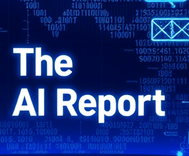What workers really want from artificial intelligence

The AI Report
Daily AI, ML, LLM and agents news
What Workers Really Want from Artificial Intelligence: Bridging the Gap Between Human Desire and Technical Reality
Artificial intelligence is rapidly transforming the workplace, presenting both opportunities and challenges. While companies focus on deploying AI for efficiency and cost savings, a crucial question remains: What do the workers themselves truly want from this technology?
A groundbreaking study by researchers at the Stanford Institute for Human-Centered AI (HAI) and the Digital Economy Lab set out to answer this, surveying 1,500 U.S. workers across 104 occupations and interviewing 52 AI experts. Their findings reveal a significant disconnect between worker desires and AI's current capabilities, highlighting critical areas for future development and adoption.
Understanding Worker Desires
The study found that workers are not universally resistant to AI. In fact, they welcome automation that can free up time for more valuable activities (69.4%), reduce tedious repetition (46.6%), and improve the quality of their work (46.6%). Tasks like scheduling, file maintenance, and error correction are seen as prime candidates for AI assistance.
However, trust emerged as a major concern. Nearly half (45%) expressed doubts about AI accuracy and reliability, while others feared job loss (23%) or a lack of human oversight (16%). Workers showed strong resistance to AI taking over creative tasks or direct communication with clients and vendors.
Critically, the study revealed a strong preference for collaboration. Most respondents favored either an equal partnership between humans and AI (45.2%) or human oversight at key stages (35.6%). This indicates a clear desire for AI as a supportive tool rather than a replacement.
According to Erik Brynjolfsson, a study author and director of the Stanford Digital Economy Lab, "The findings suggest that AI agents can play a supportive role in the workplace, relieving workers of low-value or tedious tasks rather than displacing workers."
Revealing the Capability Gap: Where AI Misses the Mark
By mapping worker desires against expert-rated AI capabilities, the researchers identified four distinct zones for workplace tasks:
- Green Light Zone: High desire for automation, high technical capability. (Tasks like data entry, simple calculations).
- Red Light Zone: Low desire for automation, high technical capability. (Tasks workers prefer to keep, but AI *could* do).
- R&D Opportunity Zone: High desire for automation, low technical capability. (Tasks workers want help with, but AI isn't good at yet).
- Low Priority Zone: Low desire for automation, low technical capability. (Tasks workers don't want automated, and AI isn't good at).
Alarmingly, the study found that a significant 41% of tasks fell into the Low Priority and Red Light zones. This means much of the current AI implementation efforts are focused on tasks that workers either don't want automated or where the technology isn't truly ready or desired. Examples included writing creative content or preparing meeting agendas, which workers preferred to handle themselves despite some AI capability.
Conversely, tasks in the R&D Opportunity Zone, like monitoring budgets or creating production schedules, were highly desired for automation by workers but currently lack sufficient AI capability. "This map highlights a pressing need to intensify research efforts focused on tasks in the R&D Opportunity Zone," Brynjolfsson emphasized. Focusing here can better align future AI with high-impact opportunities that workers actually want automated.
The Shifting Skill Landscape: What Will Be Valued?
The integration of AI is also poised to change the value of different skills in the labor market. Analyzing U.S. Bureau of Labor Statistics data, the study suggests a potential decrease in the value of traditional high-wage skills where AI excels, such as data analysis and process monitoring.
In contrast, skills that require inherently human interaction and judgment are expected to increase in importance and potentially command higher wages. These include prioritizing and organizing work, training and teaching others, and effective communication.
According to Diyi Yang, a co-author and Stanford assistant professor of computer science, "We anticipate a declining demand for skills tied to data analysis, where AI has demonstrated strong capabilities, while an increased emphasis will be placed on skills that require human interaction and coordination." This points to a future where interpersonal skills become paramount.
Why Worker Preferences Matter: Building a Human-Centered Future
Decisions about AI deployment are often driven by technical feasibility. However, as Yijia Shao, a PhD student leading the project, notes, "workers are the ones most affected by these changes and the ones the economy ultimately relies on."
Ignoring worker perspectives isn't just ethically questionable; it's counterproductive. Incorporating their desires is essential for:
- Ensuring ethical and responsible AI adoption.
- Building systems that are trusted, accepted, and effectively used.
- Revealing overlooked opportunities for AI development that truly meet user needs.
- Guiding innovation towards human-centered solutions.
This study provides a vital baseline, but the rapid pace of AI development means continuous monitoring and adaptation are necessary. Organizations and researchers must keep worker preferences at the forefront to navigate this evolving landscape successfully.
Key Takeaways and Actionable Advice:
- For Organizations: Don't automate simply because you can. Focus AI deployment on repetitive, low-value tasks where workers desire assistance and capability exists (Green Light Zone). Invest in R&D for tasks workers *really* want automated but where current AI falls short (R&D Opportunity Zone). Prioritize building collaborative AI systems with human oversight, addressing worker concerns about trust and control.
- For Workers: Understand that while some skills may decrease in value, human interaction, communication, teaching, and organizational skills are becoming increasingly important. Focus on developing these interpersonal and higher-level cognitive abilities that complement, rather than compete with, AI capabilities. Advocate for AI tools that support and augment your work, rather than seeking full automation.
By centering worker needs and desires in the development and deployment of AI, we can build a future of work that is not only more productive but also more equitable, trusted, and truly human-centered.

The AI Report
Author bio: Daily AI, ML, LLM and agents news
